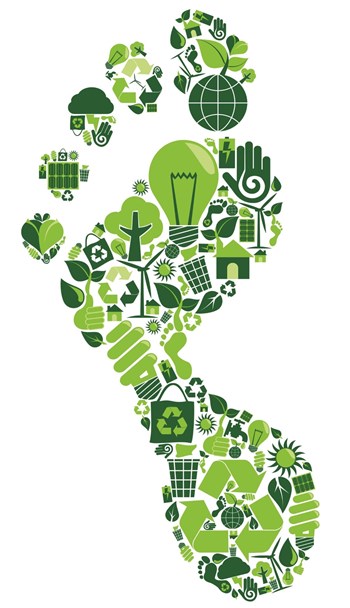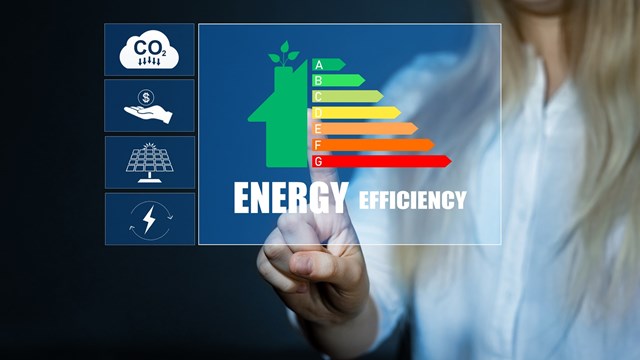
Going green doesn’t have anything to do with choosing a natural paint color for your kitchen, or planting herbs in your community garden. But the phrase can have many different meanings and can be done across a broad spectrum. Turning off lights in rooms you’re not occupying is a small green move; installing a gigantic wind turbine in your backyard is a bigger one. Different communities throughout New Jersey place green practices and programming at different positions on their lists of priorities—and the steps they take depend on funding, community interest, feasibility and other factors.
“I believe there has been a greater interest in going green in our industry. The Baby Boomer generation was much more sensitive to the ramifications our lifestyle has on our environment than their parent’s generation,” says George Vallone, president of The Hoboken Brownstone Company. “I believe the Boomer’s children, the Millennials, also known as Generation Y, are even more so.”
While New Jersey has had a mandatory recycling law on the books since 1987, state figures indicated that there has been an uptick in recycling efforts. In 2010, a 40 percent recycling rate for municipal solid waste was reported, which was up from 37 percent in 2009. However, the rate is still below the state’s goal of 50 percent.
A Greener State of Mind
Co-op and condominium boards are getting the message that green is not only good for the environment, it is good for the balance sheet, which mirrors a 2010 Accenture survey of 766 chief executives worldwide. The report found that 93 percent see sustainability as important for the future of their businesses, with 81 percent citing that they have already integrated sustainability into their businesses practices.
“New Jersey has fantastic green, sustainable opportunities that can save buildings lots of money,” says Allan Samuels, president of the North Brunswick-based engineering consultant Energy Squared. Working with multifamily residential facilities, developers as well as commercial and industrial property owners, the firm provides mechanical, electrical and plumbing designs, specifications, building performance modeling, energy simulations and renewable energy services. “The state of New Jersey has some of the best incentives,” he says adding that his company is currently working with 20 to 30 multifamily buildings that are benefiting from tapping into sustainable initiatives.
Creating a New Mindset
With a mission to promote “green homes, healthy communities and sustainable building practices through education, outreach and collaboration,” the New Jersey Chapter of the U.S. Green Building Council’s Residential Green Building Committee is a resource for associations and developers alike. “Our goal is to drive market transformation by delivering a consistent message about green building practices addressing environmental, economic and social benefits while streamlining the process of making greener homes,” notes Committee Chairman and Architect Robert Emert, Jr.
For many associations, “going green” can mean a number of things—from switching to energy-efficient light bulbs in common areas to installing solar panels to optimize the sun’s strength. As such, different communities place green practices and programming at different positions on their priority list. For the most part, the steps they take depend on funding, community interest, feasibility and other factors.
As Samuels’ points out, there are many opportunists that are “selling green,” but are not authorized to do so. “Since the economy experienced trouble, there have been many people who claim to be green professionals. Some of these people worked in retail or another job but now consider themselves to be green experts,” he says. “There are a lot of products that claim to save energy, associations and buyers have to be careful because there a lot of gimmicks out there. When some people say they are going green, they are simply referring to the color of money.”
For progressive, proactive boards, associations and managers looking into reliable “green” initiatives, any “sustainable” company should be properly accredited. Leading the pack is Leadership in Energy and Environmental Design (LEED), which consists of a suite of rating systems for the design, construction and operation of high performance green buildings, homes and neighborhoods.
It’s important to note that there are levels to LEED certification. For example, a LEED Green Associate denotes basic knowledge and skill in practicing green design, operations and construction. The LEED AP credential signifies in-depth knowledge in green building practices and specialization in a particular field such as commercial buildings and homes. In total, there are five specialties: Building Design & Construction, Interior Design & Construction, Operations & Maintenance, Homes or Neighborhood Development.
“We encouraged the new owners to carry on the green mantle by providing a home ownership guide that detailed our LEED-Platinum and Energy Star ratings and the green aspects of the building, as well as made suggestions for environmentally sensitive home maintenance such as using low-VOC cleaners and replacing the air conditioning filter frequently,” says Alison Novak, vice president of The Hudson Company Inc. Founded in 1986, the firm is a private real estate development company with a green focus and is a leading developer of new housing in the New York metropolitan area.
“We also suggested the condominium residents form a green committee and introduced the members to some neighborhood greening initiatives,” says Novak. “Finally, we spent a lot of time talking with the property management company about the building systems, cleaning products and other aspects that help them maintain the buildings as a green building.”
For many builders and green enthusiasts, a common drawback to the movement is the cost of building energy efficient new construction. “The most important metric we use is the life cycle analysis (LCA) which is the payback on the investment over the life of the technology in the building. We believe that energy savings being produced in our computer models indicate payback in less than five years for the technology investment,” says Vallone. “Additionally, the recognition of the value of green buildings is only just beginning to be standardized.”
The leader in establishing an objective underwriting standard for green building is the Capital Market Partnership (CMP) which developed the SMaRT scoring system for green building and products. “It is expected in the near future that this will become the industry favored underwriting standard for green building and green product valuation,” says Vallone.
However, not until green building valuation has an accepted standardized underwriting system like CMP’s SMaRT system will underwriters of lenders and investors be able to measure green ROI. “They will then begin supplying cheaper cost of capital recognizing the lower risk of green buildings and supporting green buildings trading at lower cap rate values then buildings that are built conventionally,” says Vallone. “Green buildings that have higher values and lower costs will be recognized as the way to build in the future.”
Forging New Paths
Over its 32 year career as an urban redeveloper, The Hoboken Brownstone Company has continually looked for ways to differentiate itself in the marketplace, explains Vallone. When New Jersey released its Draft Energy Master Plan in 2009, a light bulb (energy efficient, of course) went off in Vallone’s head. “Its stated goal was to make all new buildings 20 percent more energy efficient by the year 2020, he says. “It offered grants to developers who were willing to sponsor demonstration projects that would pilot innovative technologies that could be replicated by others to help meet that goal. We have always tried to be better by being different. To us that meant building energy-efficient, well designed, fully amenitized and just plain cool places to live.”
Vallone and his team applied for and received one of the largest residential grants under this program. The energy efficiency demonstration grant program was sponsored by the New Jersey Board of Public Utilities (NJBPU) and was partnered with Public Service Electric and Gas. “Our research led to a design for an innovative energy demand reduction technology which we believe will be the foundation of all future high-performance building science. That technology we refer to as the Tripod of High Performance Building Design Science.” While the company is in the process of building its first demonstration project using the Tripod theory, Jersey City has been paying attention to its progressive use of technology by awarding Vallone and his team its 2011 Green Project Award.
When new green buildings are built and occupied, there can be issues. “Any time you are using new building systems, you have to learn about the idiosyncrasies of that system. In the case of green buildings, there is constantly improving technology, so always something is new to learn,” says Novak. “One challenge we’ve experienced is in regard to fluorescent lights on occupancy sensors. For some reason at one of our buildings, the CFLs on occupancy sensors burn out quickly. At another of our buildings, this is not the case. The fixtures themselves are slightly different but we don’t know yet what difference is causing this issue.”
Older buildings are not out of the running, explains Samuels. He says his firm in continually providing energy audits that result in significant savings. Recently, Energy Squared was hired to perform 79 energy audits on residential buildings across New Jersey for a national real estate investment, development and management company. The buildings ranged from garden style to mid- and high-rise residential complexes.
An energy audit, he explains, is a five step process. First, an initial “walkthrough” of each property is performed to gauge potential energy saving upgrades and evaluate those opportunities to determine which will have the greatest return on investment. The second step is a full blown energy audit, which is a detailed analysis that evaluates all mechanical, electrical and plumbing systems including boilers, chillers, HVAC, lighting, controls and major water consuming devices.
“After the energy audits are complete, Energy Squared will provide design specifications and contract administration for the energy saving measures chosen to be implemented,” says Samuels. “The last step is to perform final inspections and assist in the acquisition of local, state and federal rebates/incentives.” As they say the proof is in the pudding, which was the case for two high-rise residential buildings in Elizabeth, New Jersey. Each realized a 50 percent reduction in energy usage after the audit was completed in 2011. This amounted to a savings of approximately $250,000.
For boards and associations seeking information on how to receive audits or ways in which they can “go green,” a number of organizations are available to assist including the New Jersey Chapter of the U.S. Green Building Council. “There are resources available to those interested,” says Samuels. “With the proper information, an association can determine what will be the best green bang for their buck.”
W.B. King is a freelance writer and a frequent contributor to The New Jersey Cooperator.






Leave a Comment